This guide will show you how to cut lemons and limes in two different ways – wedges and slices. Let’s go back to basics and nail the approach for good!
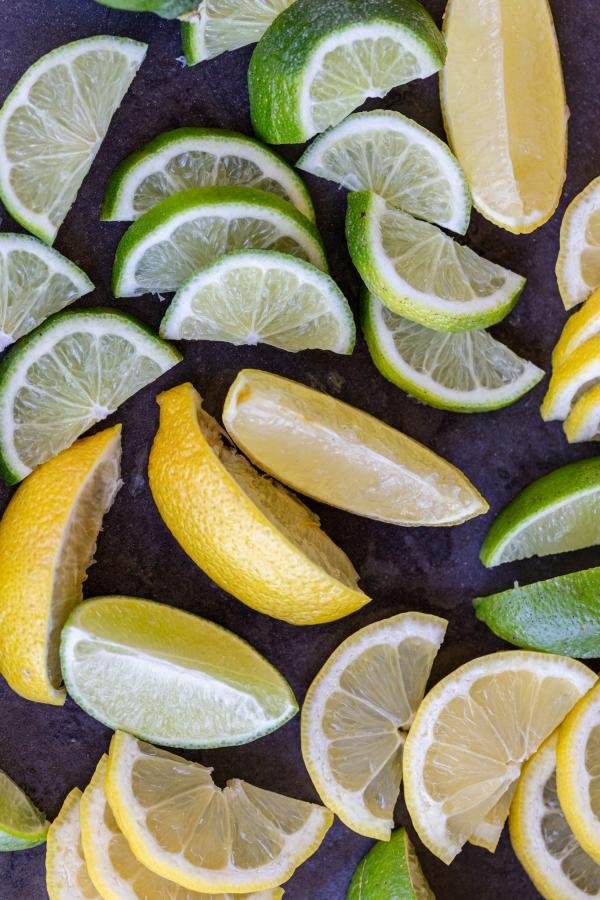
If you’re a huge fan of fresh lemon and limes but have a hard time turning them into pretty wedges and slices, this guide will help you master citrus slicing once and for all. Using just a little technique, you’ll get the most consistent slice and perfect little wedge possible, while also nixing any risk of cutting yourself. That’s a win-win!
Kitchen Tool Recommendations
All you need to learn how to cut lemons and limes is a chef’s knife and a trusty cutting board. Before we dive into the guide, let us first share our top recommendations for both in case you don’t already have them at the ready.
- Chef’s Knife – This 8-inch Zwilling knife is one of our all-time favorite tools for chopping and trimming fruits and veggies. We use it every single day and it lasts forever if you sharpen it regularly and take care of it.
- Cutting Board – This is one of the most solid, multi-purpose cutting boards out there. As fans of a minimalist kitchen, we use this cutting board for everything from letting ribeye steaks rest to slicing up citrus. It’s also gorgeous enough to sit on the counter full-time.
How to Cut Lemons and Limes Two Ways (Easy Step by Step Tutorial)
Whether you are slicing lemons for grilled tilapia or cutting pretty slices for infused water with a citrus twist, here’s all you need to know to get the most symmetrical pieces possible.
How to Cut Lemons and Limes in Wedges
- Slice the Citrus in Half: Hold the citrus firmly against the cutting board and cut it in half from end to end.
- Slice the Wedges: Lay the two halves of the fruit flesh side down on the cutting board. Using a sharp knife, slice each half into 3, equal-sized wedges.
- Remove the Rib Membrane & Seeds: Using your chef’s knife, cut the thick rib membrane away from the center (some varieties have a thicker rib than others) and remove the seeds with the tip of your knife. Optionally, slice the wedges in half for smaller portions. Squeeze away and enjoy!




How to Cut Lemons and Limes in Slices
- Cut off the Ends: Hold the fruit firmly on its side and remove about half an inch from the bottom and top of the citrus.
- Remove the Seeds: Stand the citrus upright, slice it in half, and remove the seeds with your fingers or the tip of your knife.
- Slice the Citrus: Hold one half firmly and cut it into slices with your chef’s knife. Repeat with the other half.
- Remove the Center: If necessary, remove the thick membrane from the center of the slice if it’s super big or fibrous.




Bonus! How to Zest & Spiral Lemons and Limes
Since we are on the subject of citrus, we might as well go over how to properly zest and spiral the skins of lemons and limes too!
How to Zest Lemons and Limes
- Wash the Citrus: Rinse the citrus under cold water.
- Zest the Citrus: Using a microplane or a box grater, run the lemon over the sharp edges, zesting only the yellow skin and not the bitter rind. Mince the zest down if need be and sprinkle it into your favorite dishes.
How to Spiral the Skins of Lemons and Limes
- Wash & Trim the Citrus: Rinse the piece of fruit under cold water and trim off the ends.
- Slice the Citrus: Slice the fruit in half and hold one half on its side. Cut the citrus into circular slices.
- Cut off the Rind: Using your knife, cut alongside the rind and release it from the fruit.
- Spiral the Rind: Wrap the strip of the peel around your finger or a skewer to mold it into a tight spiral shape. Pop the spiral into your favorite drink or use it to decorate a platter of fresh fish.
The Most Common Types of Lemons
There are a million and one different varieties of lemons around the world and various ways to use each, but here’s the lowdown on the three most common ones.
- Lisbon Lemons (Most Common) – These are the lemons you are most familiar with and will find all over the world. You can recognize them because they have a pointed end opposite the stem and bright yellow coloring. They are also more on the acidic side than the sweet side.
- Meyer Lemons – Meyer lemons are a hybrid of a lemon and a mandarin. They are on the sweeter side and don’t add a ton of acid to dishes. You’ll find them in the supermarket when they are season in winter and early spring. You’ll notice them by their darker yellow peel and larger size than typical Lisbon lemons.
- Eureka Lemons – Eureka lemons are almost identical to Lisbon lemons in taste and appearance. They do, however, tend to have slightly rougher skin and a thicker rind (this makes them a perfect candidate for recipes that require zest).
The Most Common Types of Limes
The same goes for varieties of limes – there are too many to count! Here’s an overview of the 3 you are most likely to find in your local supermarket.
- Persian Limes (Most Common) – Persian limes are the variety you will find readily available in most supermarkets. They are bright green, oval-shaped, and juicy when they’re ripe. Some of the least tart of all limes, they are on the sweeter side and perfect for squeezing for recipes that call for fresh lime juice.
- Key Limes – These limes are small, round, and tout a pale greenish color. They are more tart than Persian limes and have a distinct aroma to them. You’ll find them used in, you guessed it, key lime pie!
- Kaffir Limes – Kaffir limes have distinct, warty skin and a small round shape. They have barely any juice in them and are typically used in Thai cuisine to spice up different curry dishes.
The Best Way to Store Lemons and Limes
The best way to store sliced or wedged citrus is in an airtight container or sealable plastic bags in the refrigerator. When stored properly, the fruit will keep fresh for up to 7 days. If you want the slices and wedges to last even longer, use a vacuum sealer machine and accompanying vacuum sealer storage container to keep the citrus fresh for up to 5 times longer than conventional airtight storage containers.
Recipes that Call for Lemons & Limes
- The Best Broiled Lobster Tail – Juicy lobster with lemon wedges
- Oven-Baked Butter Cod – 4-ingredient cod topped with lemon slices
- Cilantro Lime Rice – Chipotle copycat rice
- Hawaiian Poke Bowl – Lime marinated tuna fish
Recipe
Instructions
Wedges
- Hold the citrus firmly against the cutting board and cut it in half from end to end.
- Lay the two halves of the fruit flesh side down on the cutting board. Using a sharp knife, slice each half into 3, equal-sized wedges.
- Using your chef's knife, cut the thick rib membrane away from the center and remove the seeds.
Slices
- Hold the fruit firmly on its side and remove about half an inch from the bottom and top of the citrus.
- Stand the citrus upright, slice it in half, and remove the seeds with your fingers or the tip of your knife.
- Hold one half firmly and cut it into slices with your chef's knife. Repeat with the other half.
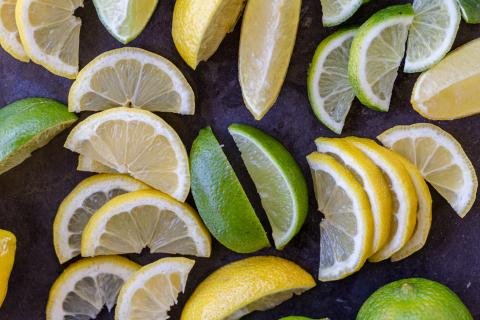
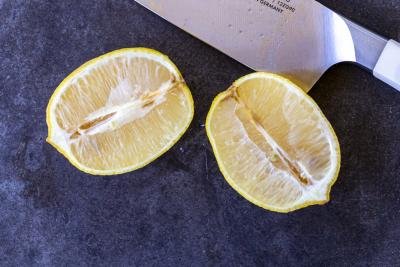
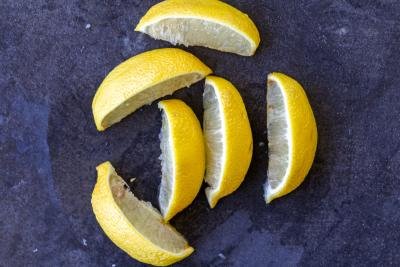
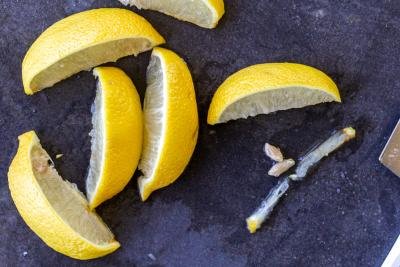
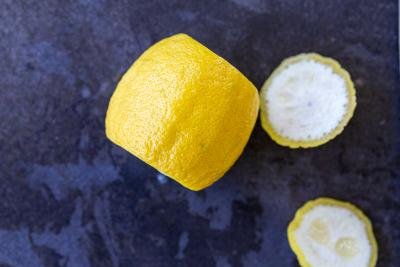

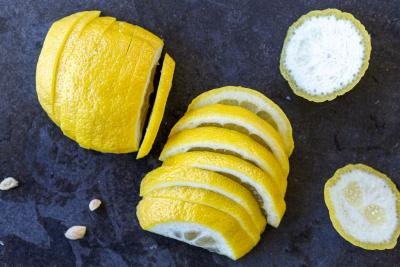

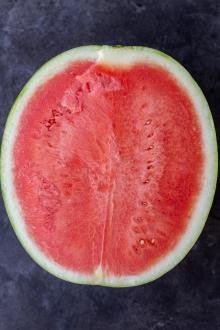



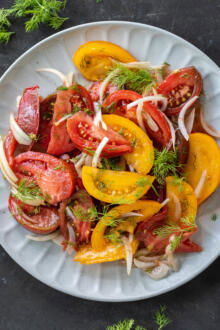
This is helpful! I always cut my lemons and limes in half the opposite way and they never look quite right. Trying it this way next time!
Yes! That's a common mistake, but now you can avoid it 🙂
Love the tips!! I am always cutting lemons & limes & your tips make it seem so easy!
Glad to be of help!
This was so helpful, thank you. I just sent to my husband too!
I hope he finds it just as helpful, too! Thanks for sharing 🙂